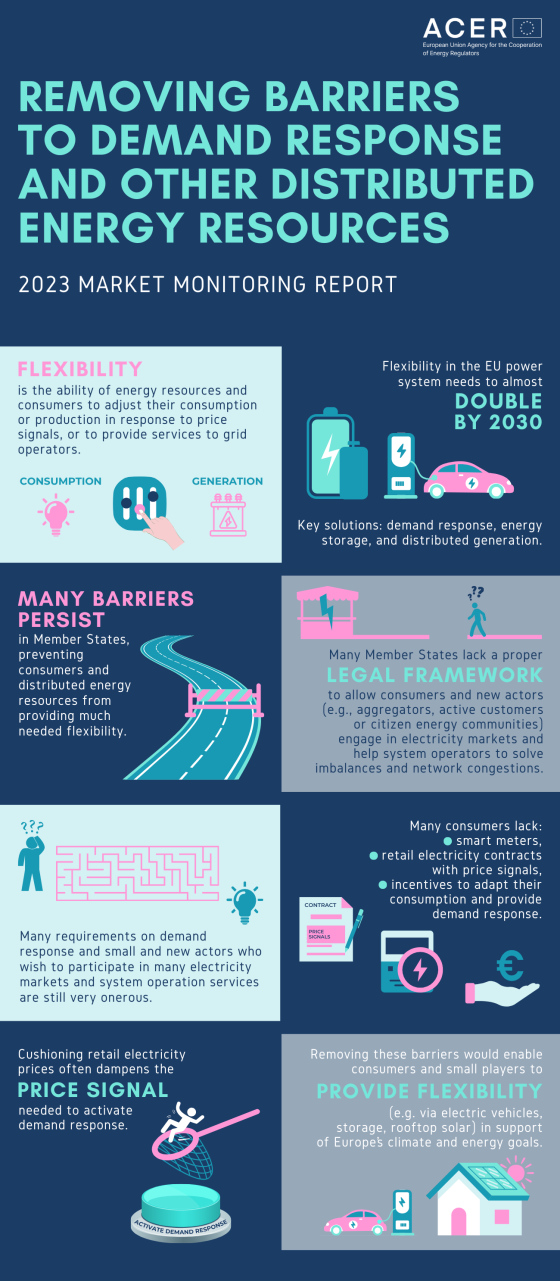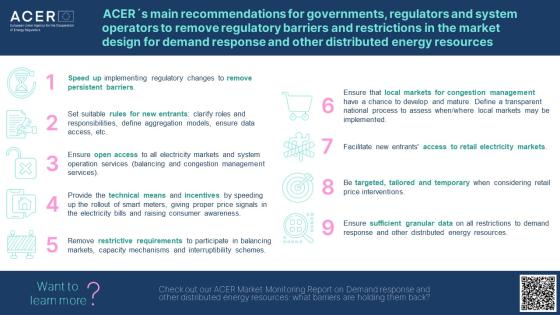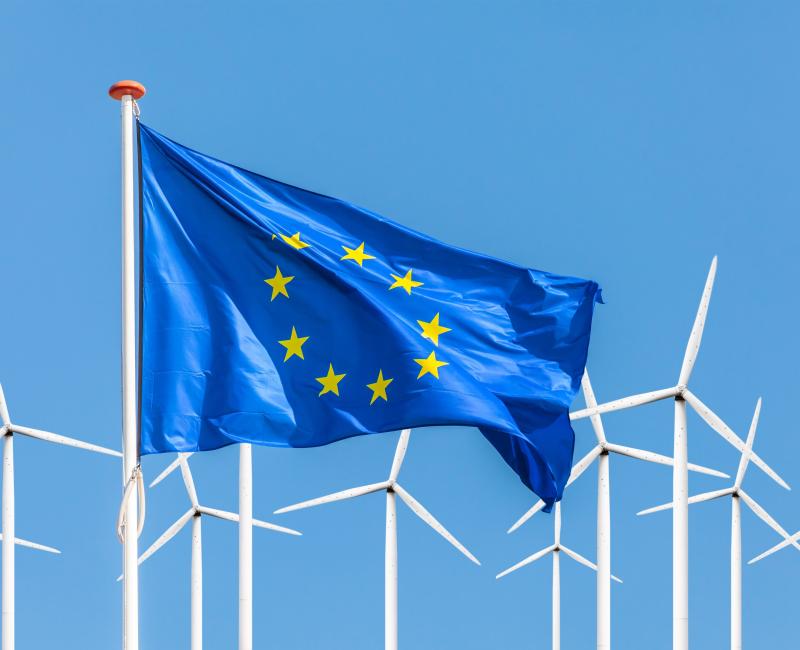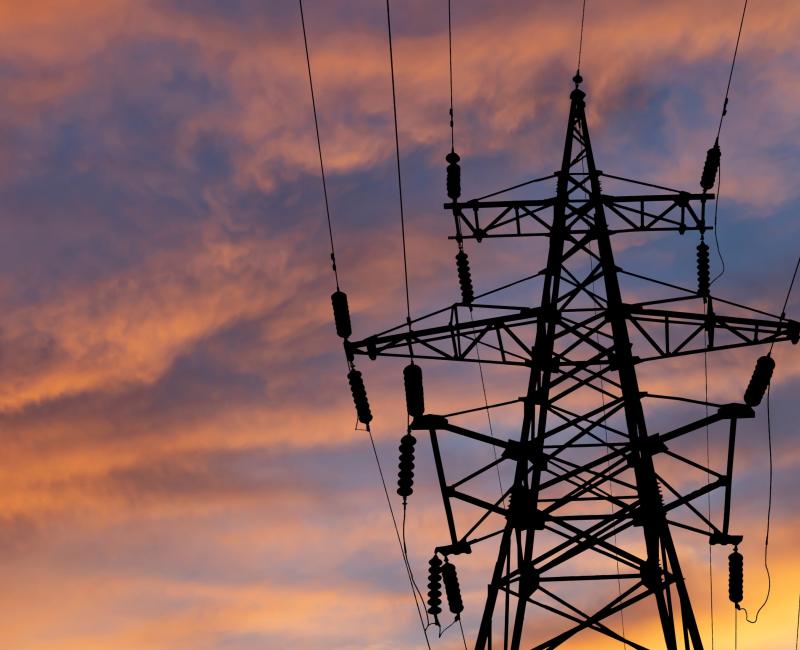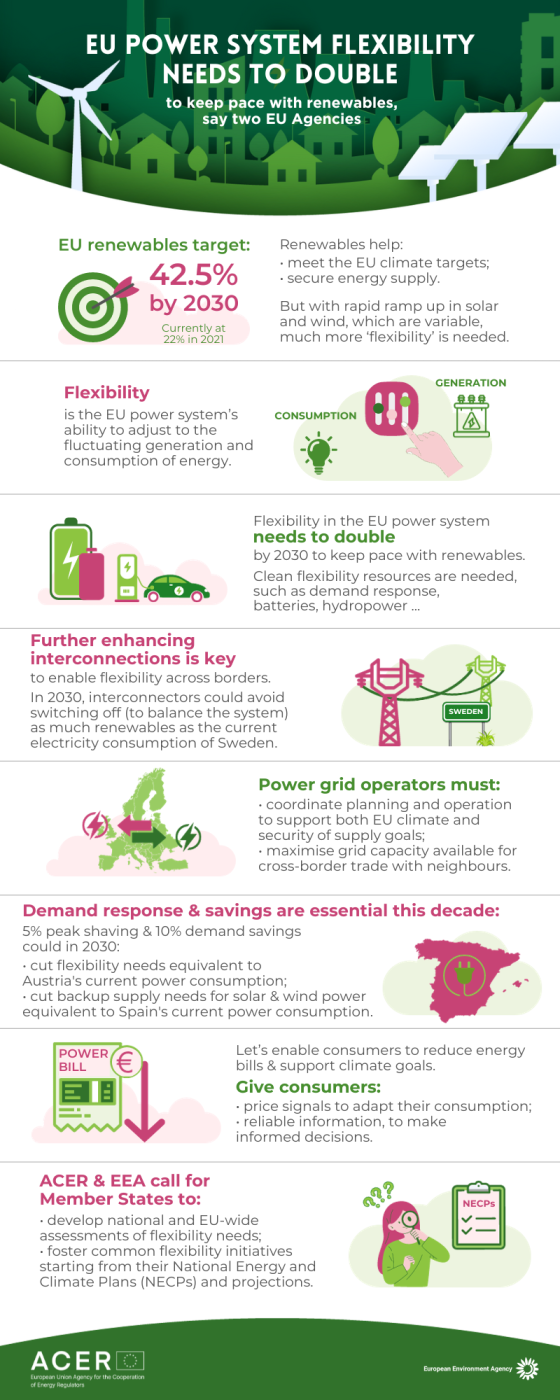ACER proposes amendments to the electricity grid connection network codes

ACER proposes amendments to the electricity grid connection network codes
What is it about?
Today, ACER has submitted to the European Commission its Recommendation on the amendments to the network codes on requirements for grid connection of generators (RfG Regulation) and on demand connection (DC Regulation).
The RfG Regulation and DC Regulation are the electricity grid connection codes, designed to establish and maintain the physical connection between the transmission and/or distribution grids and the grid users.
The RfG Regulation sets out the common standards that generators must respect to connect to the grid. The DC Regulation establishes binding rules for electricity system users.
Why review the network codes?
In September 2022, in the framework of the Grid Connection Stakeholders Committee, the European Commission tasked ACER to propose amendments to the grid connection network codes. The purpose of these amendments was to enhance the Regulations by making them more ‘future-proof’ and reflecting the latest developments in the electricity and transport sectors (e.g. including electricity storage, electromobility, heat-pumps and power-to-gas demand units, etc.).
To inform its drafting, ACER engaged with stakeholders on several occasions:
- First public consultation (Autumn 2022)
- Workshop on the amendments to the grid connection network codes (Autumn 2022)
- Workshop on electromobility, power-to-gas demand units and heat-pumps (Spring 2023)
- Workshop on rate of change of frequency and grid forming capabilities (Spring 2023)
- Workshop on electricity storage (Spring 2023)
- Webinar on the amendments to the grid connection network codes (Summer 2023)
- Second public consultation (Summer 2023)
A first review of the inputs received was conducted by ACER and the National Regulatory Authorities (NRAs). The proposals were then discussed with the European Network of Transmission System Operators for Electricity (ENTSO-E), EU Distribution System Operators (DSOs) Entity and other stakeholders to finalise the Recommendation.
What are ACER’s main recommendations?
RfG Regulation:
- Update definitions and expand scope of application to include new electricity storage and electric vehicles;
- Introduce criteria for significant modernization of the power generating modules following the TSOs’ proposals and regulatory approval;
- Define new requirements for various types of electric vehicles, along with associated supply equipment (such as charging parks), and electricity storage modules.
DC Regulation:
- Update definitions and expand scope of application to include new electric vehicles and associated supply equipment as well as power-to-gas units and heat pumps;
- Introduce criteria for significant modernization of existing transmission-connected demand facilities, transmission-connected distribution facilities, distribution systems and demand units used to provide demand response services following TSOs’ proposals and regulatory approval;
- Introduce amendments to requirements for transmission-connected demand facilities and distribution systems.
What are the next steps?
According to the Electricity Regulation, the European Commission will consider the recommendations made by ACER and adopt the two network codes, as a final step.

